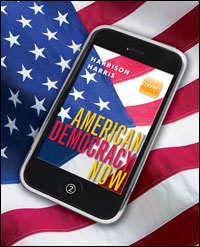1 A) distributing information to voters B) conducting elections C) recruiting candidates D) All these answers are correct. 2 A) Political parties seek to govern. B) Interest groups tend to have broader issue concerns than political parties. C) Interest groups are public organizations, while political parties are private organizations. D) Political parties recruit candidates for local and national positions of political leadership. 3 A) Junior members of the U.S. House of Representatives B) Junior members of the U.S. Senate C) Senior members of the U.S. House of Representatives D) Senior members of the U.S. Senate 4 A) the 2010 health care bill B) the 2010 economic stimulus program C) the 2010 Clean Air Act D) the 2010 Climate Control Act 5 A) They need to improve their ability to directly respond to voters. B) They help voters determine how a particular candidate will vote on specific issues. C) They protect voters from the ascent of extreme ideologies into political power. D) They make political issues more understandable for the general public. 6 A) the party organization B) the party in the electorate C) the party in government D) the party in the media 7 A) party members running for office. B) party members who organize election campaigns. C) party identifiers. D) party members who vote in primary elections. 8 A) They are not affiliated with any political party. B) They affiliate with a party but do not fully agree with all of that party's policy positions. C) They are almost always moderates. D) They choose not to vote in most elections. 9 A) African Americans B) upper-middle-class Americans C) white Americans D) All these answers are correct. 10 A) 1790s B) 1860s C) 1930s D) 1980s 11 A) a smaller government that performs fewer social welfare functions B) a more active governmental role in regulating moral values C) Both a smaller government that performs fewer social welfare functions and a more active governmental role in regulating moral values are major ideological priorities for the current Republican Party. D) None of these answers is correct. 12 A) party organization. B) party in the electorate. C) party leadership. D) party in government. 13 A) party organization. B) party in the electorate. C) party leadership. D) party in government. 14 A) the House minority leader B) the Senate minority leader C) the minority whip D) the national chair of the party that does not hold the presidency 15 A) It allows for unlimited contributions to specific candidates. B) It allows for unlimited contributions for get-out-the vote drives. C) It only applies to national political party organizations. D) All these answers are correct. 16 A) separation of powers. B) checks and balances. C) pluralism. D) divided government. 17 A) with suspicion B) as an essential way of securing the people's power C) as a necessary evil D) None of these answers is correct. 18 A) the winner-take-all election system. B) the constitutional mandate for a two-party system. C) continued socialization to the two-party system. D) election laws that favor the two-party system. 19 A) George Washington B) Thomas Jefferson C) Abraham Lincoln D) Theodore Roosevelt 20 A) Democratic B) Whig C) Federalist D) Republican 21 A) dealignment. B) realignment. C) deaffiliation. D) deconstruction. 22 A) proportional representation B) primary elections C) the spoils system D) political machines 23 A) Theodore Roosevelt B) H. Ross Perot C) Jesse Ventura D) Ralph Nader 24 A) less government B) lower taxes C) freedom of choice D) states' rights 25 A) It has democratized it. B) It has increased the influence of economic elites. C) It has increased the influence of educational elites. D) It has increased the influence of poor people.





